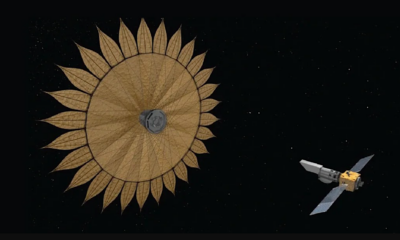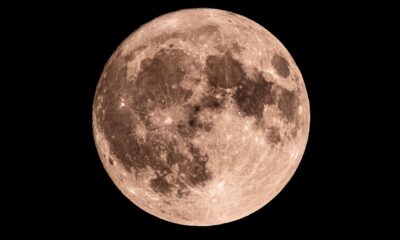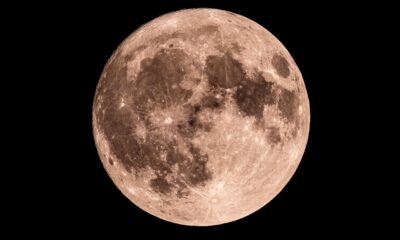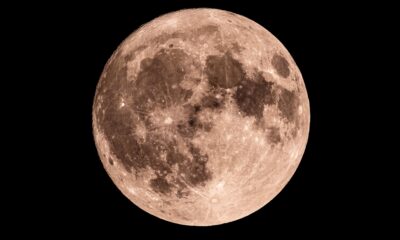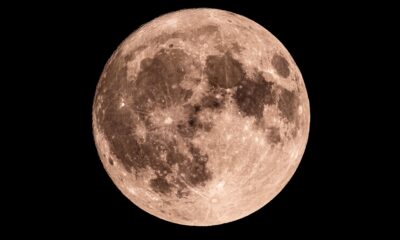Science
Discover the Andromeda Galaxy: Best Viewing Times in October
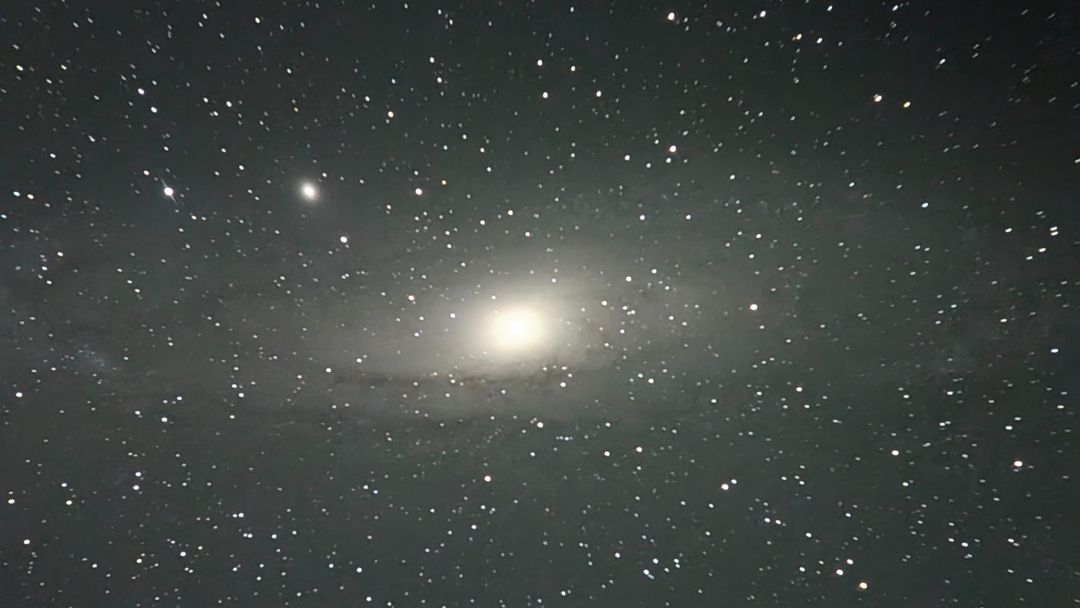
Late October offers an exceptional opportunity to observe the Andromeda Galaxy, also known as M31. This closest galactic neighbor to the Milky Way sits approximately 2.5 million light-years from Earth in the constellation Andromeda. As the month progresses, Andromeda rises in the east at sunset, reaches its highest point in the sky around midnight, and gradually shifts to the northwestern horizon as dawn approaches.
The Andromeda Galaxy is a marvel in the night sky, with its spiral arms spanning an impressive 260,000 light-years and hosting over a trillion stars. At its core lies a supermassive black hole, surrounded by glowing red stellar bodies. Under dark skies, Andromeda is visible to the naked eye as a hazy oval, but a telescope or binoculars can reveal the intricate details of its active glowing core and the surrounding diffuse haze.
Finding the Andromeda Galaxy
To locate the Andromeda Galaxy, start by identifying the ‘M’ star formation of the constellation Cassiopeia, which can be seen high overhead at midnight for observers in the U.S. The leftmost three stars in this formation point toward the bright star Shedar, which acts as a guide to Andromeda. Once you find this constellation, you’ll be well on your way to spotting the galaxy.
Astrophotographers have long favored the Andromeda Galaxy for capturing its stunning features. One notable example is astrophotographer Ronald Brecher, who dedicated a remarkable 38 hours to imaging Andromeda over August and September 2023. His efforts produced breathtaking images showcasing the wealth of star formation and the intricate details of the spiral arms filled with cosmic dust.
Smartphone Astrophotography: Capturing Andromeda
Advancements in technology have made astrophotography accessible to a wider audience. With just a smartphone, a telescope, and a simple adapter, enthusiasts can capture impressive images of celestial bodies. Jim Preusse, a proponent of smartphone astrophotography, created a stunning image of the Andromeda Galaxy using his Pixel 9 Pro camera mounted over a 56 mm eyepiece on an Orion XT 10G telescope.
Preusse’s image, taken with a 4-minute exposure in the Pixel 9 Pro’s Astro Mode, vividly displays Andromeda’s bright core and sweeping dust lanes in its spiral arms. Notably, the small satellite galaxy M32 appears as a glowing ball above the core, while the elliptical galaxy Messier 110 is visible below the hazy disk of Andromeda.
“The great thing about smartphone astrophotography is that anyone can do it,” Preusse shared in an email to Space.com. “The results are quick, so you are able to view several targets in one evening. Each outing is an adventure with something new to see.”
For those interested in capturing the night sky for themselves, numerous resources are available, including guides for beginners in astrophotography and recommendations for the best cameras and lenses to photograph celestial wonders. As October unfolds, the Andromeda Galaxy awaits, offering stargazers and photographers alike a chance to connect with the cosmos.
-

 Technology5 months ago
Technology5 months agoDiscover the Top 10 Calorie Counting Apps of 2025
-

 Technology3 weeks ago
Technology3 weeks agoOpenAI to Implement Age Verification for ChatGPT by December 2025
-

 Health3 months ago
Health3 months agoBella Hadid Shares Health Update After Treatment for Lyme Disease
-

 Health4 months ago
Health4 months agoAnalysts Project Stronger Growth for Apple’s iPhone 17 Lineup
-

 Health4 months ago
Health4 months agoErin Bates Shares Recovery Update Following Sepsis Complications
-

 Technology5 months ago
Technology5 months agoDiscover How to Reverse Image Search Using ChatGPT Effortlessly
-

 Technology3 months ago
Technology3 months agoElectric Moto Influencer Surronster Arrested in Tijuana
-

 Technology5 months ago
Technology5 months agoMeta Initiates $60B AI Data Center Expansion, Starting in Ohio
-

 Technology2 months ago
Technology2 months agoDiscover 2025’s Top GPUs for Exceptional 4K Gaming Performance
-

 Technology5 months ago
Technology5 months agoRecovering a Suspended TikTok Account: A Step-by-Step Guide
-

 Health5 months ago
Health5 months agoTested: Rab Firewall Mountain Jacket Survives Harsh Conditions
-

 Lifestyle5 months ago
Lifestyle5 months agoBelton Family Reunites After Daughter Survives Hill Country Floods

